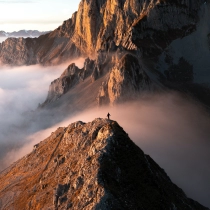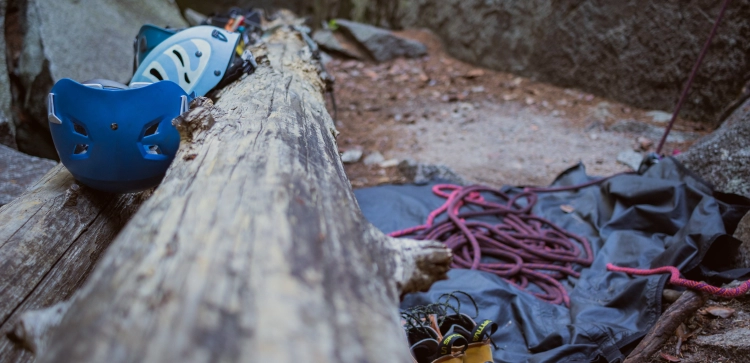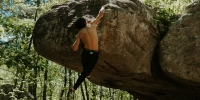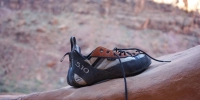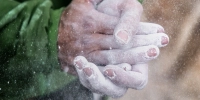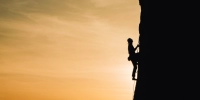Environmental Factors In Climbing: Weather & Altitude Impact

Outdoor climbing offers a unique and exhilarating experience, but it also comes with a set of environmental challenges that every climber must contend with: the weather and high altitude. These factors can significantly affect your climbing adventures, from safety concerns and gear considerations to physiological demands and overall performance. Understanding and preparing for these environmental variables is crucial for a safe, enjoyable, and successful ascent.
This comprehensive guide will explore the profound impact of weather conditions and high-altitude environments on outdoor climbing, providing valuable insights into physiological changes, safety precautions, gear considerations, and strategies to optimize your performance when facing these natural elements.
- The Impact Of Weather On Outdoor Climbing
- The Impact Of High Altitude On Climbing Performance
- Conclusion
- Frequently Asked Questions
- What Are The Primary Weather Factors Climbers Should Consider?
- How Does Cold Weather Impact Climbing Gear?
- What Are The Risks Of Climbing In Thunderstorms?
- Is It Safe To Climb In Windy Conditions?
- How Does High Altitude Affect Oxygen Levels?
- What Is Acute Mountain Sickness (AMS)?
- What Physiological Changes Occur At High Altitudes?
- What Is The "Climb High, Sleep Low" Strategy?
- How Important Is Hydration At High Altitudes?
- What Is The Role Of Mental Preparedness In High-altitude Climbing?
The Impact of Weather on Outdoor Climbing
Before embarking on an outdoor climbing trip, it's crucial to be well-informed about the prevailing weather conditions. Weather can dramatically alter rock characteristics, body performance, and safety protocols.
Primary Weather Factors Climbers Need to Consider
-
Temperature and Its Effects on Climbing:
-
Cold Weather: In colder conditions, ensure you have appropriate clothing and gear to stay warm. Cold temperatures can affect your dexterity and comfort, making ropes and carabiners less pliable. Inspect equipment for stiffness or reduced functionality.
-
Hot Weather: Climbing in hot weather can lead to dehydration. Stay well-hydrated and consider timing your climbs to avoid the peak heat of the day. Protect your skin from harmful UV rays by wearing sunscreen, sunglasses, and a hat. Prolonged exposure to intense sunlight can also weaken nylon gear over time, so regularly inspect for UV damage.
-
-
Rain and Thunderstorms:
-
Safety Risks: Climbing in rain or thunderstorms presents significant safety risks, including lightning strikes and extremely slippery rock surfaces.
-
Mitigation: If thunderstorms are in the forecast, avoid climbing altogether; lightning is a serious threat. Rain makes holds slippery and reduces friction, so exercise extreme caution and adjust your climbing technique to accommodate wet conditions.
-
-
Windy Conditions:
-
Challenges: Wind can pose challenges, especially for multi-pitch climbs or routes on exposed terrain, impacting balance and communication.
-
Precautions: Ensure anchors are secure and belaying setup is stable. Establish clear signals with your climbing partner, as wind can make verbal communication difficult.
-
The Impact of High Altitude on Climbing Performance
Climbing at very high altitudes presents unique physiological challenges that go beyond the physical demands of the climb itself. These are typically encountered in mountain climbing rather than everyday sport climbing or big wall routes.
The Physiology of High Altitudes
-
Oxygen Levels: At high altitudes, the concentration of oxygen in the air decreases, meaning climbers have less oxygen available for breathing. This can lead to symptoms like shortness of breath, dizziness, and fatigue.
-
Acute Mountain Sickness (AMS): A common condition when climbers ascend too quickly. Symptoms include headaches, nausea, and difficulty sleeping. More severe forms include High Altitude Cerebral Edema (HACE) and High Altitude Pulmonary Edema (HAPE).
-
Altitude-Related Changes: The body undergoes various physiological adaptations at high altitudes, including increased heart rate, higher respiratory rate, and changes in blood composition (e.g., increased red blood cell production). These adaptations aim to deliver more oxygen to vital organs.
Challenges at High Altitudes
-
Reduced Physical Performance: Climbers often experience a significant decrease in physical performance at high altitudes due to lower oxygen levels. Even basic movements can feel more challenging.
-
Climbing Speed: Ascending at high altitudes tends to be slower and more deliberate. Climbers must conserve energy and avoid overexertion to prevent rapid fatigue.
-
Mental Preparedness: High-altitude climbing requires immense mental resilience. Climbers must expect challenges and stay focused on their goals. Thorough research into the specific climbing location is crucial for better awareness and preparation.
-
Efficient Movement: Prioritizing efficient climbing techniques becomes even more critical at high altitudes to conserve precious energy.
Strategies for Acclimatization
Acclimatization is the process by which the body adjusts to lower oxygen levels at high altitudes. Effective strategies are essential for safety and performance.
-
Gradual Ascent: Climbers can significantly reduce the risk of altitude-related issues by ascending gradually. This allows the body sufficient time to acclimatize and adapt to the lower oxygen levels. A common guideline is to ascend no more than 1,000-1,500 feet (300-450 meters) per day above 8,000 feet (2,500 meters), with a rest day for every 3,000 feet (900 meters) gained.
-
Stay Hydrated and Well-Fueled: Proper hydration and nutrition are paramount at high altitudes. Dehydration can exacerbate altitude-related symptoms. Consume plenty of fluids and maintain a diet rich in carbohydrates.
-
Adequate Rest: Rest is crucial for acclimatization. Quality sleep and dedicated rest days are essential for letting the body adjust and recover from the physiological stress of altitude.
-
"Climb High, Sleep Low": This strategy involves ascending to a higher altitude during the day for activity and then descending to a lower altitude to sleep. This helps the body acclimatize more effectively while minimizing the risks associated with sleeping at very high elevations.
-
Medication (Consult a Doctor): In some cases, medications like Acetazolamide (Diamox) can be prescribed by a doctor to aid in acclimatization and prevent AMS.
Conclusion
Environmental factors like weather and high altitude are dynamic and ever-present elements in the world of outdoor climbing. Understanding their profound impact on safety, gear, physiological responses, and climbing conditions is essential for every climber. Whether you're facing the scorching heat of summer, the bitter cold of winter, an unexpected rainstorm, or the thin air of high mountains, being prepared and making informed decisions can make all the difference in ensuring a safe, enjoyable, and successful climbing experience.
Remember, when it comes to climbing and environmental conditions, safety should always be your top priority. Stay informed, plan ahead, and be ready to adapt to changing conditions. With the right knowledge and precautions, you can continue to pursue your passion for climbing while respecting the unpredictable yet magnificent nature of the great outdoors.
Frequently Asked Questions
What are the primary weather factors climbers should consider?
Climbers should consider temperature (cold and hot), rain, thunderstorms, and wind, as these can significantly affect safety, gear, and climbing conditions.
How does cold weather impact climbing gear?
In very cold conditions, ropes and webbing can become less flexible and prone to damage, while metal gear can become extremely cold to the touch, requiring gloves.
What are the risks of climbing in thunderstorms?
The primary risks are lightning strikes and extremely slippery rock surfaces due to rain, making it essential to avoid climbing altogether if thunderstorms are in the forecast.
Is it safe to climb in windy conditions?
Climbing in windy conditions can be challenging, especially on exposed routes. It's crucial to ensure secure anchors, stable belaying setups, and clear communication with your partner.
How does high altitude affect oxygen levels?
At high altitudes, the concentration of oxygen in the air decreases, leading to less oxygen available for breathing and potentially causing shortness of breath, dizziness, and fatigue.
What is Acute Mountain Sickness (AMS)?
AMS is a common condition that can occur when climbers ascend too quickly to high altitudes, with symptoms including headaches, nausea, and difficulty sleeping.
What physiological changes occur at high altitudes?
The body adapts by increasing heart rate and respiratory rate, and changing blood composition to deliver more oxygen to vital organs.
What is the "Climb High, Sleep Low" strategy?
"Climb High, Sleep Low" is an acclimatization strategy where climbers ascend to a higher altitude during the day for activity and then descend to a lower altitude to sleep, aiding in more effective adaptation.
How important is hydration at high altitudes?
Proper hydration is essential at high altitudes because dehydration can exacerbate altitude-related symptoms like headaches and fatigue.
What is the role of mental preparedness in high-altitude climbing?
Mental preparedness is crucial for high-altitude climbing as it helps climbers expect challenges, stay focused on goals, and make informed decisions in demanding environments.
